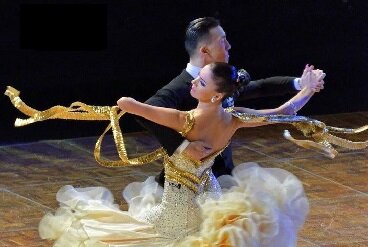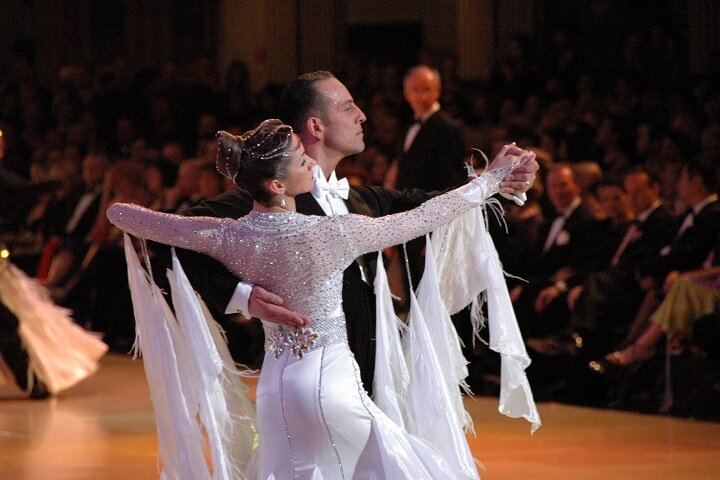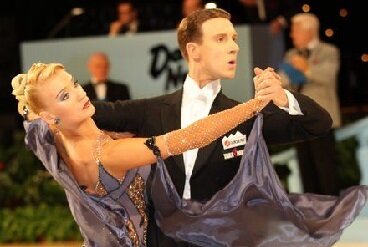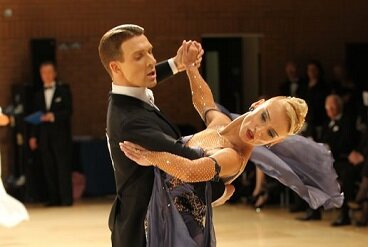Differences in Tango 
15 April 2016
A special thanks to RoutingCube for proposing this idea on
Among all the Ballroom Dances, Tango is the black sheep. The technique in all other four dances varies slightly, but in Tango, things are often completely different from the other four. These differences all work to maintain the character and historical method of dancing Tango, while creating a new way to generate the power and ease of movement, and they come in four main areas: position, hold, movement, and footwork.
Position
There is a twist in the body in Tango not found in the other dances. To achieve this, face the wall with your feet together. Slightly flex the knees, and then slip the right foot back so the ball of the right foot is in line with the arch of the left foot. While the feet still point at the wall, turn the knees slightly to the left, the hips slightly more, and continue that twisting action up the body until the shoulders, which should face diagonally to the Wall, which is to say there is a 1/8 difference in alignment between the feet and the shoulders. Because of this, steps forward with the left foot will be in CBMP, and steps forward with the right foot will have a right side lead, and the Walks will naturally curve slightly to the left.
Hold
 |
 |
 |
Because of the twist that both partners have through their bodies, discussed immediately above, the Lady will feel more on the Man's right side than in the other four dances, which will naturally cause three main differences in the hold:
| 1 | The Man's right arm will wrap around the Lady's back further and with a sharper slope downward from the elbow to the fingers. The fingertips should reach around the Lady's back, until they are just past the Lady's spine. |
| 2 | The Lady's left hand will not be placed on the Man's right shoulder, as it is in the other four dances. Rather, her hand will hook around the Man's upper arm, so that the back of her hand is pressing up from underneath his upper arm, just near his underarm. |
| 3 | Whereas in the other dances, the Man's left arm will seem to hang gently from his hand down to his shoulder, in Tango, the Man's left forearm should be almost parallel to the floor from the elbow to the wrist, with a sharp angle at the elbow. |
Movement
In the four other dances, weight swings freely from foot to foot, and a clear transfer of weight allows for the technique of Swing and Sway to develop. In Tango, weight is maintained between feet on all walking steps, and so Swing is not generated from movement, and Sway is not necessary to control movement. For an in depth comparison between walking in Tango and the other Standard dances, click here. Besides specific line figures, such as the Oversway, the topline should remain flat and mostly parallel to the ground when compared to the other dances.
Compare the movement of Victor and Anastasia (currently ranked second in the world in Professional Ballroom) in these videos, depicting their Waltz and their Tango.
Notice that the movement in Waltz flows with Swing and Sway, while in Tango, the movement is mostly flat, with the excitement and dynamics coming from rotation and flight across the floor.
Footwork
If you have read any of the technical details for a Tango figure and any figure from any of the other four dances, you will notice a dissimilarity in the footwork. Whereas in the other four dances, the footwork might be Heel-Toe (HT) or Toe-Heel (TH), in Tango, it is Heel-Flat (H) or Ball-Heel (BH). Because there is no full transfer of weight on walking steps in tango, as discussed in the movement section, weight should be held between both feet, and the feet are picked up from the floor and placed down onto the floor. Because of this difference in the style of moving the body and the legs, the footwork is slightly different as well.